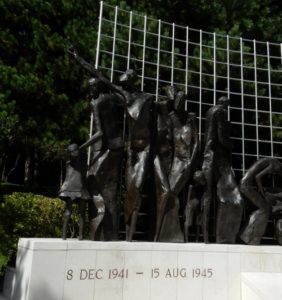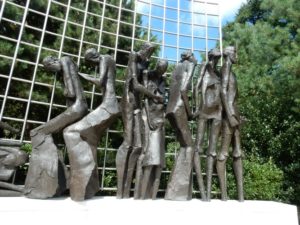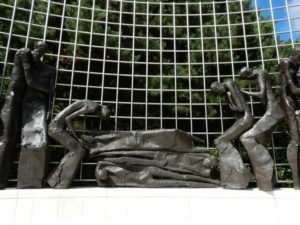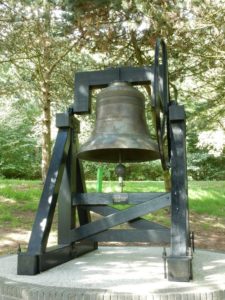Although the Second World War ended on August 15, 1945, many people believe that the war ended in May of that year. It is of course true that in May 1945 the German troops surrendered and the Allies achieved the victory in Europe. In Asia however the war continued and the inhabitants of the countries occupied by Japan were far from liberated.
War
 The Japanese surrender ended a war that had begun on December 7, 1941 with the attack on Pearl Harbor. The Japanese then turned their attention to the Dutch East Indies (now Indonesia), in order to gain control of those islands’ valuable rubber plantations and oil fields. Greatly outnumbered, the combined forces of the Allies could not stop or even slow the Japanese advance. So on March 8, 1942 the Royal Dutch East Indies Army surrendered and the Dutch East Indies came under Japanese military supervision.
The Japanese surrender ended a war that had begun on December 7, 1941 with the attack on Pearl Harbor. The Japanese then turned their attention to the Dutch East Indies (now Indonesia), in order to gain control of those islands’ valuable rubber plantations and oil fields. Greatly outnumbered, the combined forces of the Allies could not stop or even slow the Japanese advance. So on March 8, 1942 the Royal Dutch East Indies Army surrendered and the Dutch East Indies came under Japanese military supervision.
During Japanese occupation
 The Japanese took some 42,000 military prisoners of war, about 20% of whom died. More than 100,000 non-combatants — men, women and children — were also locked up in civilian prison camps. Approximately 13% of them died. A much greater number of Indonesians were put to forced labour by the Japanese, who called them “Romusha”(Romusha is the Japanese word for work soldier). The death toll among these Indonesians ranged from 400,000 to 4,000,000. And even outside the camps life during the Japanese occupation was hard and dangerous.
The Japanese took some 42,000 military prisoners of war, about 20% of whom died. More than 100,000 non-combatants — men, women and children — were also locked up in civilian prison camps. Approximately 13% of them died. A much greater number of Indonesians were put to forced labour by the Japanese, who called them “Romusha”(Romusha is the Japanese word for work soldier). The death toll among these Indonesians ranged from 400,000 to 4,000,000. And even outside the camps life during the Japanese occupation was hard and dangerous.
 The Indisch Monument
The Indisch Monument
The impressive Indisch Monument on Teldersweg in The Hague commemorates all these victims. Her Majesty Queen Beatrix unveiled the monument on August 15, 1988. It was designed by Jaroslawa Dankowa, a Dutch artist of Bulgarian origin.
In front of a high steel grid, seventeen bronze figures of various ages stand on either side of a body lying on a stretcher. The figures represent the many faces of suffering: the pain, the despair and the protest. The steel grid symbolizes solidarity to some viewers, the bars behind which people were imprisoned to others. We see women grieving by the body of the deceased. But we also see figures celebrating liberation and facing the future. A mother with her child symbolizes the new generations and better times to come. In 1995 a bronze bell was mounted behind the monument. This bell rings for 30 minutes during remembrance ceremonies.
In 1995 a bronze bell was mounted behind the monument. This bell rings for 30 minutes during remembrance ceremonies.
Place of remembrance
This monument is important to many people. This is shown by the many flowers that always lie at the foot of the monument; they come from funerals and cremations of survivors and their offspring. Each year on August 15 a remembrance ceremony is held, to remember the victims and commemorate the end of the Second World War in the Kingdom of The Netherlands Remembrance Ceremony August 15
I will tell you more about the Second World War during my special city walk and bicycle tour “The Hague in World War II”


